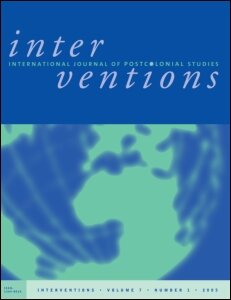Racial Prescriptions: Pharmaceuticals, Difference, and the Politics of Life
In the contemporary United States, matters of life and health have become key political concerns. Important to this politics of life is the desire to overcome racial inequalities in health; from heart disease to diabetes, the populations most afflicted by a range of illnesses are racialized minorities. The solutions generally proposed to the problem ofracial health disparities have been social and environmental in nature, but in the wake of the mapping of the human genome, genetic thinking has come to have considerable influence on how such inequalities are problematized.Racial Prescriptions explores the politics of dealing with health inequities through targeting pharmaceuticals at specific racial groups based on the idea that they are genetically different. Drawing on the introduction of BiDil to treat heart failure among African Americans, this book contends that while racialized pharmaceuticals are ostensibly about fostering life, they also raise thorny questions concerning the biologization of race, the reproduction of inequality, and the economic exploitation of the racial body.
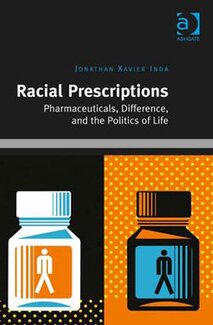
Mad Men, Mad World: Sex, Politics, Style, and the 1960s (2013)
Since the show's debut in 2007, Mad Men has invited viewers to immerse themselves in the lush period settings, ruthless Madison Avenue advertising culture, and arresting characters at the center of its 1960s fictional world. Mad Men, Mad World is a comprehensive analysis of this groundbreaking TV series. Scholars from across the humanities consider the AMC drama from a fascinating array of perspectives, including fashion, history, architecture, civil rights, feminism, consumerism, art, cinema, and the serial format, as well as through theoretical frames such as critical race theory, gender, queer theory, global studies, and psychoanalysis.
In the introduction, the editors explore the show's popularity; its controversial representations of race, class, and gender; its powerful influence on aesthetics and style; and its unique use of period historicism and advertising as a way of speaking to our neoliberal moment. Mad Men, Mad World also includes an interview with Phil Abraham, an award-winning Mad Men director and cinematographer. Taken together, the essays demonstrate that understanding Mad Men means engaging the show not only as a reflection of the 1960s but also as a commentary on the present day.
Contributors. Michael Bérubé, Alexander Doty, Lauren M. E. Goodlad, Jim Hansen, Dianne Harris, Lynne Joyrich, Lilya Kaganovsky, Clarence Lang, Caroline Levine, Kent Ono, Dana Polan, Leslie Reagan, Mabel Rosenheck, Robert A. Rushing, Irene Small, Michael Szalay, Jeremy Varon

Life as Politics: How Ordinary People Change the Middle East, Second Edition
Prior to 2011, popular imagination perceived the Muslim Middle East as unchanging and unchangeable, frozen in its own traditions and history. In Life as Politics, Asef Bayat argues that such presumptions fail to recognize the routine, yet important, ways in which ordinary people make meaningful change through everyday actions. First published just months before the Arab Spring swept across the region, this timely and prophetic book sheds light on the ongoing acts of protest, practice, and direct daily action.
The second edition includes three new chapters on the Arab Spring and Iran's Green Movement and is fully updated to reflect recent events. At heart, the book remains a study of agency in times of constraint. In addition to ongoing protests, millions of people across the Middle East are effecting transformation through the discovery and creation of new social spaces within which to make their claims heard. This eye-opening book makes an important contribution to global debates over the meaning of social movements and the dynamics of social change.
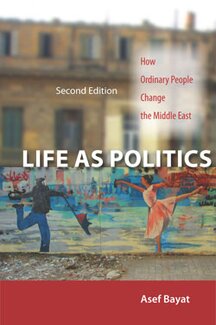
Governing Immigration Through Crime: A Reader
In the United States, immigration is generally seen as a law and order issue. Amidst increasing anti-immigrant sentiment, unauthorized migrants have been cast as lawbreakers.Governing Immigration Through Crime offers a comprehensive and accessible introduction to the use of crime and punishment to manage undocumented immigrants.
Presenting key readings and cutting-edge scholarship, this volume examines a range of contemporary criminalizing practices: restrictive immigration laws, enhanced border policing, workplace audits, detention and deportation, and increased policing of immigration at the state and local level. Of equal importance, the readings highlight how migrants have managed to actively resist these punitive practices. In bringing together critical theorists of immigration to understand how the current political landscape propagates the view of the "illegal alien" as a threat to social order, this text encourages students and general readers alike to think seriously about the place of undocumented immigrants in American society.

Expanding the Strike Zone: Baseball in the Age of Free Agency
With its iconic stars and gleaming ballparks, baseball has been one of the most captivating forms of modern popular culture. In Expanding the Strike Zone, Daniel A. Gilbert examines the history and meaning of the sport’s tumultuous changes since the mid-twentieth century, amid Major League Baseball’s growing global influence. From the rise of ballplayer unionism to the emergence of new forms of scouting, broadcasting, and stadium development, Gilbert shows that the baseball world has been home to struggles over work and territory that resonate far beyond the playing field.
Readers encounter both legendary and unheralded figures in this sweeping history, which situates Major League Baseball as part of a larger culture industry. The book examines a labor history defined at once by the growing power of big league stars—from Juan Marichal and Curt Flood to Fernando Valenzuela and Ichiro Suzuki—and the collective struggles of players working to make a living throughout the baseball world. It also explores the territorial politics that have defined baseball’s development as a form of transnational popular culture, from the impact of Dominican baseball academies to the organized campaign against stadium development by members of Seattle’s Asian American community.
Based on a rich body of research along with new readings of popular journalism, fiction, and film, Expanding the Strike Zone highlights the ways in which baseball’s players, owners, writers, and fans have shaped and reshaped the sport as a central element of popular culture from the postwar boom to the Great Recession.
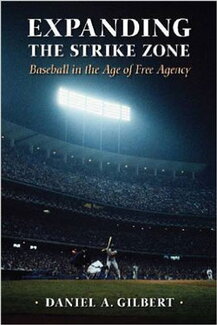
Post-Islamism: The Changing Faces of Political Islam
At least since the Islamic revolution of 1979 in Iran, political Islam or Islamism has been the focus of attention among scholars, policymakers, and the general public. Much has been said about Islamism as a political and moral/ethical trend, but scant attention is paid to its ongoing development. There is now a growing acknowledgment within the scholarly and policy communities that Islamism is in the throes of transformation, but little is known about the nature and direction of these changes. The essays of Post-Islamism bring together young and established scholars and activists from different parts of the Muslim World and the West to discuss their research on the changing discourses and practices of Islamist movements and Islamic states largely in the Muslim majority countries. The changes in these movements can be termed 'post-Islamism,' defined both as a condition and a project characterized by the fusion of religiosity and rights, faith and freedom, Islam and liberty. Post-Islamism emphasizes rights rather than merely obligation, plurality instead of singular authoritative voice, historicity rather than fixed scriptures, and the future instead of the past.
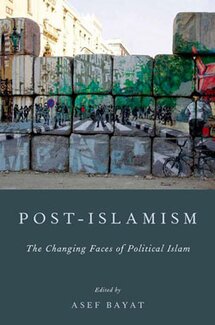
Approaches to Teaching the Works of Naguib Mahfouz
Naguib Mahfouz is the Arab world’s best-known writer and the single most important chronicler and analyst of twentieth-century Egypt. He was awarded the Nobel Prize in Literature in 1988, and since then his work has been increasingly studied in North American university classrooms. This first volume in the MLA series Approaches to Teaching World Literature to focus on an Arab author or Arabic literature provides an introduction to Mahfouz.
In part 1, “Materials,” the editors discuss Mahfouz’s background, influence, and critical reception. In part 2, “Approaches,” the volume’s contributors offer information, resources, and insights for teaching his work. Topics covered include the Arabian Nights tradition in Mahfouz’s work, the challenge of teaching Mahfouz in English translation, the Nasserite intellectual in The Beggar, the image of Alexandria in Miramar, the bitterness of British occupation in Midaq Alley, and the quest of Sufism in “Zaabalawi.”
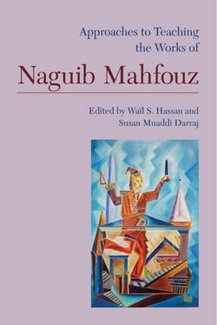
Critical Theory: A Reader for Literary and Cultural Studies
A wide-ranging and refreshingly up-to-date anthology of primary readings, Critical Theory: A Reader for Literary and Cultural Studies, edited by Robert Dale Parker, presents a provocative mix of contemporary and classic essays in critical theory.
From the foundational ideas of Marx and Freud to key writings by Fanon and Foucault, the essays in this collection represent the most influential ideas in modern critical thought and in the contemporary interpretation of literature and culture.
Ideal as a stand-alone reader or as a companion to a critical theory survey--including How to Interpret Literature: Critical Theory for Literary and Cultural Studies, also by Robert Dale Parker--this collection of seminal readings invites students to join in the ongoing debates and controversies of critical discussion, reading, writing, and interpretation.
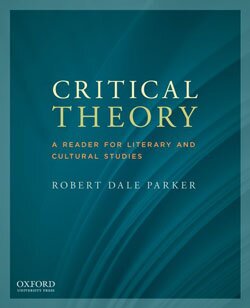
The 'Invisible Hand' and British Fiction, 1818-1860: Adam Smith, Political Economy, and the Genre of Realism
The 'invisible hand', Adam Smith's metaphor for the morality of capitalism, is explored in this text as being far more subtle and intricate than is usually understood, with many British realist fiction writers (Austen, Dickens, Gaskell, Eliot) having absorbed his model of ironic causality in complex societies and turned it to their own purposes.
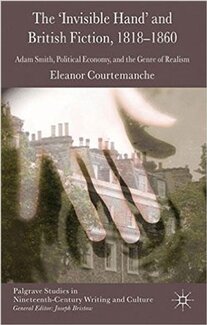
100 English Building
608 South Wright Street
Urbana, Illinois 61801
